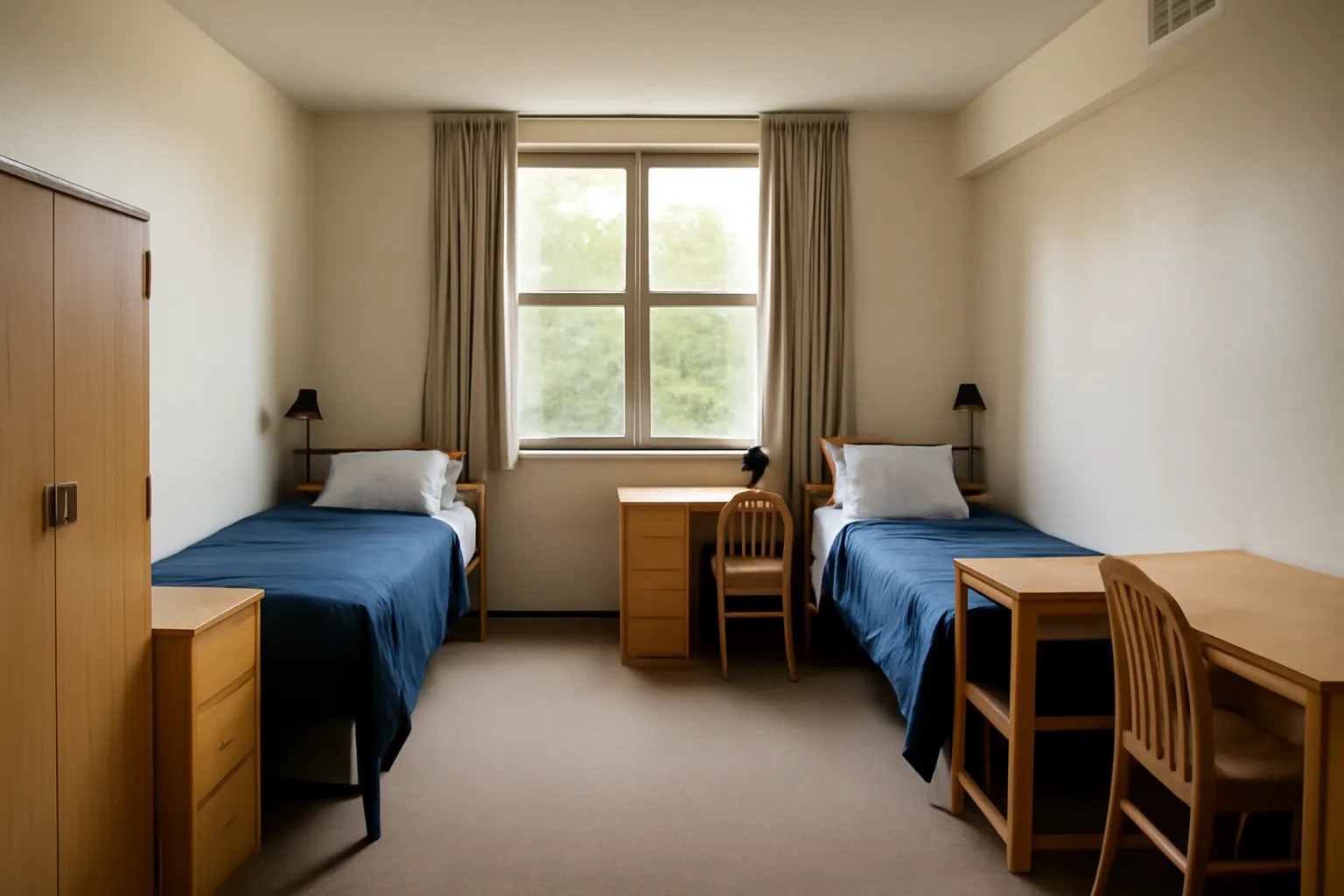University dormitories are an essential part of the college experience for many students, providing convenience, a sense of community, and an easy transition to independent living. However, understanding the costs associated with these dorms, what kind of support is available, and how to prepare for dorm life can sometimes be overwhelming. In this article, we will explore everything you need to know about university student dormitory costs, fees, and the support provided, along with some preparation tips to make your transition smoother.
Are you a university student wondering about dormitory costs and fees? What kind of support is available, and how can you prepare for dorm life? Find out everything you need to know in this article!
College Student Dormitory Trace: The Dormitory Landscape
Understanding the different types of dormitory setups is essential for every college student. University dormitories come in many shapes and sizes, each with its own set of characteristics, benefits, and challenges. Depending on the university and its location, dormitories can either be traditional, suite-style, or apartment-style. Here’s what to consider:
Types of Dorms:
-
Traditional Dorms These are the most basic forms of dormitories, typically with shared rooms where two students live in each space. They may share a common bathroom with other residents on the same floor.
-
Suite-Style Dorms These dormitories provide more privacy, with small groups of students (usually 4-8) living together in a suite, sharing bathrooms within the unit.
-
Apartment-Style Dorms These are the most private option, where students live in apartments with kitchens, living rooms, and bathrooms. This setup is often preferred by upperclassmen or those looking for more independence.
Why It Matters:
Each type of dormitory has its pros and cons. Traditional dorms are often cheaper but may lack privacy. Suite-style or apartment-style dorms are usually more expensive but offer a more comfortable living situation. Deciding what kind of dorm life you want will heavily influence your budget and personal experience at university.
Trace of Dormitory Costs:
The cost of living in a dormitory varies widely depending on the type of dorm, its location, and additional amenities. For example, a traditional dorm may cost $4,000-$8,000 per year, while suite-style or apartment-style dorms can range from $8,000 to over $12,000 per year. Students should carefully evaluate these costs and compare them to other housing options, such as off-campus living.
Search for more dormitory information
University Student Dormitory Fee: Breaking Down the Costs
When looking at dormitory fees, it’s important to consider not only the base price but also what is included. Many dorm fees cover more than just room rental. Here’s what to know:
What’s Included in the Fee?
-
Room Rent The primary component of your dormitory fee, which is based on the type of dorm and its amenities.
-
Utilities Many universities include utilities (electricity, water, heating, and cooling) in the dorm fees, though it varies from campus to campus.
-
Meal Plans Some universities bundle meal plans with dormitory fees. These meal plans allow students to access campus dining halls and other on-campus food options.
-
Wi-Fi and Cable Many universities provide free Wi-Fi and cable as part of the dormitory fees, but again, this can vary.
Other Costs:
-
Laundry Fees Some dorms charge for laundry, with students needing to pay either per load or for a laundry card to use the machines.
-
Security Deposits A one-time fee that is typically refundable at the end of the year if there is no damage to the room.
-
Parking If you have a car and plan to park on campus, parking fees may be separate from your dormitory costs.
How to Save:
Understanding all the components of dormitory fees will help students plan their budgets more effectively. Opting for a simpler meal plan or a less expensive room type can significantly reduce costs. Moreover, looking for ways to minimize unnecessary fees, like avoiding premium parking, can add up to savings.
College Student Dormitory Support: Services and Resources
University dormitories are designed to provide not just a place to live but also a variety of support services to ensure students have a safe and enjoyable experience. Here’s what you can expect:
Support and Resources:
-
Resident Advisors (RAs) RAs are upperclassmen who live in the dorms and are available to help with any problems, whether they be personal, social, or academic. They provide guidance and organize activities to foster community.
-
Maintenance and Repairs Most dorms offer 24/7 maintenance services for any issues, like plumbing problems or malfunctioning appliances.
-
Security Dormitories often have security personnel or access control systems in place to ensure the safety of all residents. Some campuses also have emergency phones or apps for added security.
-
Academic Support Many dorms are located close to study areas or libraries. Some universities also offer tutoring and academic resources right in the dorms to help students succeed.
-
Social Activities Dorms often organize events like movie nights, game nights, and community service opportunities to help students get involved and build friendships.
How This Helps:
These resources create an environment that nurtures students both academically and socially. Whether it’s dealing with homesickness or preparing for exams, dormitory support services play a crucial role in ensuring students’ success and well-being.
Find out more about dormitory support
University Student Dormitory Preparation: Getting Ready for Dorm Life
Preparing for dorm life is crucial to making your transition to university smooth. Here’s a step-by-step guide to help you get ready:
What to Pack:
-
Bedding Check with the dorm for the size of the bed (twin, full, etc.) and bring appropriate bedding. Include extra sheets, blankets, and pillows for comfort.
-
Kitchen Supplies If your dorm doesn’t include a full kitchen, bring a microwave, fridge, or small appliances for storing and preparing simple meals.
-
Decor Make your dorm room feel like home by bringing decorations like posters, lamps, and small furniture pieces.
-
School Supplies Don’t forget your textbooks, notebooks, pens, and other academic essentials.
-
Personal Items Include toiletries, clothes, and other personal belongings to ensure you feel settled.
Financial Planning:
-
Budget Create a financial plan to manage your dormitory fee payments, meal plans, and other additional expenses. Factor in all the costs you might incur over the year, and look for ways to save.
-
Scholarships and Grants Explore opportunities for financial assistance to help with the cost of living in a dorm. Many universities offer specific grants or scholarships for housing.
Socializing and Building a Network:
Engage with your roommates and neighbors early on to establish a friendly relationship. Consider joining dorm-specific events to get to know more students and build a strong support network.
Get tips on dormitory preparation
Conclusion
In conclusion, understanding the cost, support, and preparation needed for university dormitory life will help you transition smoothly into this new chapter of your academic career. Dorms provide not only a roof over your head but also a community where you can grow, learn, and make lasting friendships. By carefully planning your finances, using the support available, and preparing properly, you’ll be set for a successful and enjoyable dormitory experience. Welcome to the world of college life!






